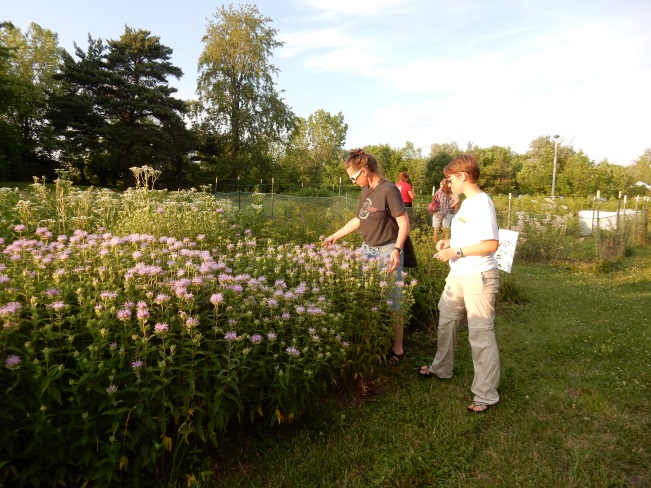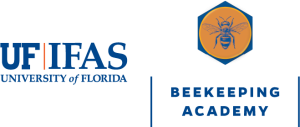Mary B. Galea
The Pollinator Partnership (P2) has partnered with Bee Culture Magazine on two of its Ohio research projects; Monarch Wings Across Ohio (MWAO) and the U.S. Bee Buffer Project. MWAO is P2’s monarch research initiative and part of the national effort, Monarch Wings Across America. The U.S. Bee Buffer Project is P2’s honey bee forage research program that started in 2014 in California and North Carolina and expanded to Ohio in 2015.
MWAO’s goal is to gain a science-based understanding of what plant species adult monarchs use to fuel their 3,000 mile migration and how to best install monarch habitat in various settings; farms, corporate lands, gardens, urban lots, utility right-of-way, roadsides, and parks. With support from numerous partners, including Bee Culture Magazine, P2 installed 18 monarch habitat research plots across Northeast Ohio. Field researchers are collecting plant-pollinator interaction and phenology data from these plots. After at least three years of sampling, the data will be used to create Ohio-specific monarch habitat planting guides for land managers and the general public. Visit: http://www.pollinator.org/monarchs.htm to access and download a copy of the existing regional monarch habitat development guides.
The U.S Bee Buffer Project aims to create affordable, regionally specific, and ground-truthed honey bee forage seed mix recommendations. To do so, the staff at P2 has consulted with various authorities and experts to develop a variety of honey bee forage research seed mixes. These research seed mixes were then distributed to approximately 250 farmers and beekeepers across California, North Carolina, and Ohio. Each research seed mix recipient, or Bee Buffer participant, was selected through a standardize application process. In exchange for the research seed mix the participants have agreed to plant the seed in a marginal area (buffer), leave it in place for 3 to 5 years and allow field researchers to access the buffer for data collection. So far, over 325 acres have been seeded as bee buffers.
By working with partners, such as Bee Culture Magazine, P2 is able to deliver the best possible habitat guidance to everyone interested in creating pollinator habitat. Look for honey bee forage guidance and additional monarch habitat guides at www.pollinator.org soon!







